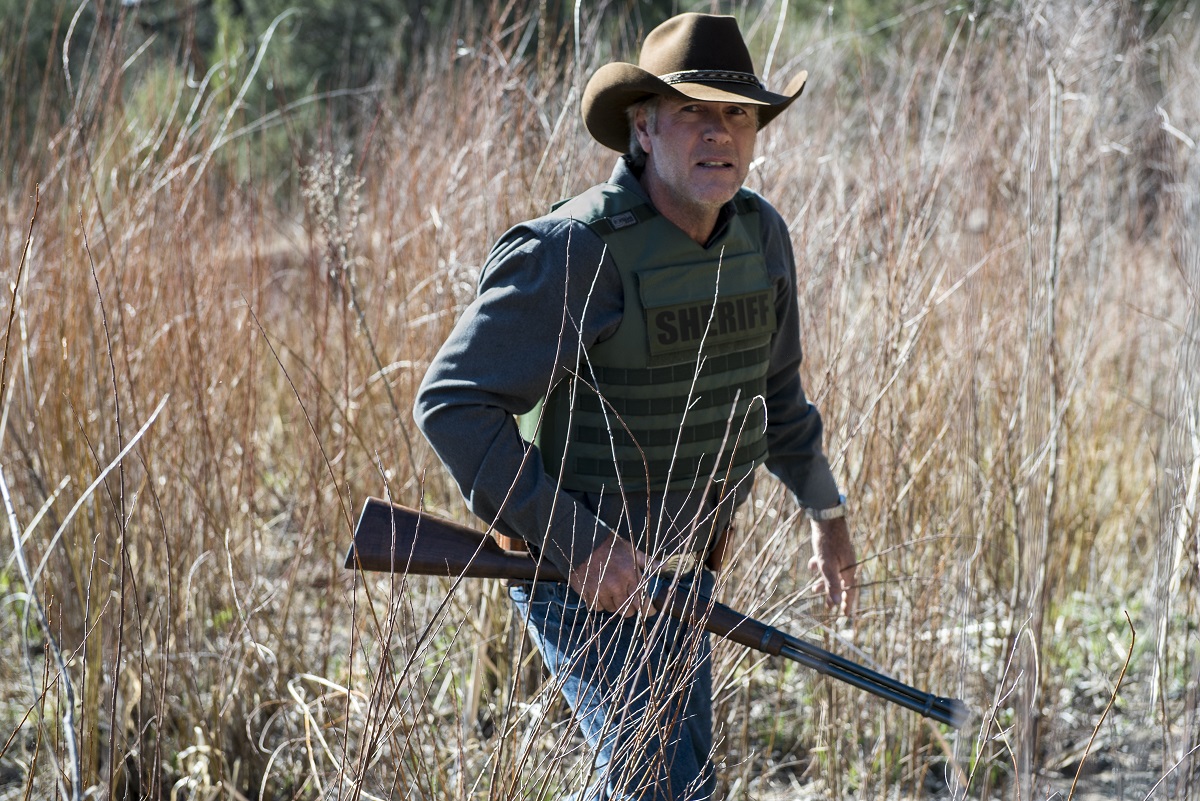I must admit to a certain degree of surprise when Netflix
announced that they were pulling A&E’s “Longmire” from the maw of the
cancellation bear (the show premieres in its entirety on the service this
Thursday, 9/10). Netflix had made major ground in recent years developing their
own programming with shows like “House of Cards” and “Orange is the New Black.”
Sure, the “Arrested Development” experiment was worthwhile (and I hope they
return for more), but that show had a loyal, undeniable following who had
basically been chanting for its revival since Gob Bluth took his last Segway
ride. And the return of “The Killing” for a final season was a mistake on
nearly every level, proving that sometimes shows are cancelled for a reason.
“Longmire”? Really. I should learn to stop questioning Netflix in 2015. They
have proven me wrong yet again.

It’s not long into the three episodes of “Longmire” made
available for press when something dawned on me—like a General Manager filling
a weak position on his team, Netflix picked up “Longmire” to fill a need. They
don’t really have a show like it. We’ve kind of been assuming that sturdy,
reliable, mystery shows of the variety that generally appeal to older viewers
and people with USA in their Favorite Channels queue (think “CSI,” “Law &
Order,” “Monk”) don’t really fit with streaming services and binge viewing.
Netflix and Amazon have clearly been cribbing from HBO and Showtime in their
novel-esque approach to television. But that doesn’t mean that a well-done “mystery
of the week” series couldn’t work in
this format. Actually, watching “Longmire,” I realized how well suited this
kind of show is for a streaming service. With a show like “House of Cards,” you
know one more episode really isn’t going to resolve anything. With a show like “Longmire,”
it’s always going to be tempting to watch just “one more mystery.”
And what’s surprising about these three episodes is how
cleanly the creators interweave standalone stories with an overall arc. About
that arc—I can’t really say much. It feels like even saying which characters
have made the transition from cable television to Netflix—and which ones have
not—is a bit of spoiler. Suffice to say, the three leads are the same. The show
is led by the perfectly-cast Robert Taylor as Walt Longmire, the Sheriff of
Absaroka County, an area of Wyoming with a rich history and a large Native American
population. His deputy and most loyal partner is Vic Moretti (Katee Sackhoff),
although Henry Standing Bear (Lou Diamond Phillips) is arguably his most
reliable confidant.

At the end of season three, Walt discovered who was behind
his wife’s murder, a nefarious local businessman named Jacob Nighthorse (A.
Martinez). Season four picks up right there, with an angry Longmire going after
Nighthorse, while Henry tries to stop him from doing something he’ll regret.
Over the next three episodes, the Longmire-Nighthorse drama serves as backdrop
to a tragedy, a real mystery that will push Longmire even deeper into obsession
and depression. The writers do a marvelous job of pushing their multi-episode
arc forward while also taking time for new cases, such as a brilliantly
executed one in episode two in which a body is found at an old Japanese
Internment Camp. That mystery even thematically ties into the rest of the
series in that it’s about how we don’t really know the people we think we do.
It sometimes sounds like faint praise to describe a series
like you would a reliable car but “Longmire” is just a sturdy show. It is
well-constructed all around—confidently made, well-acted, and the writing is
much smarter than many shows like it. It hums, each episode these three feeling more well-paced than the one before. Actually, my comparisons to mysteries on
networks like CBS and USA may not have been fair. “Longmire” is better than any
of those.












